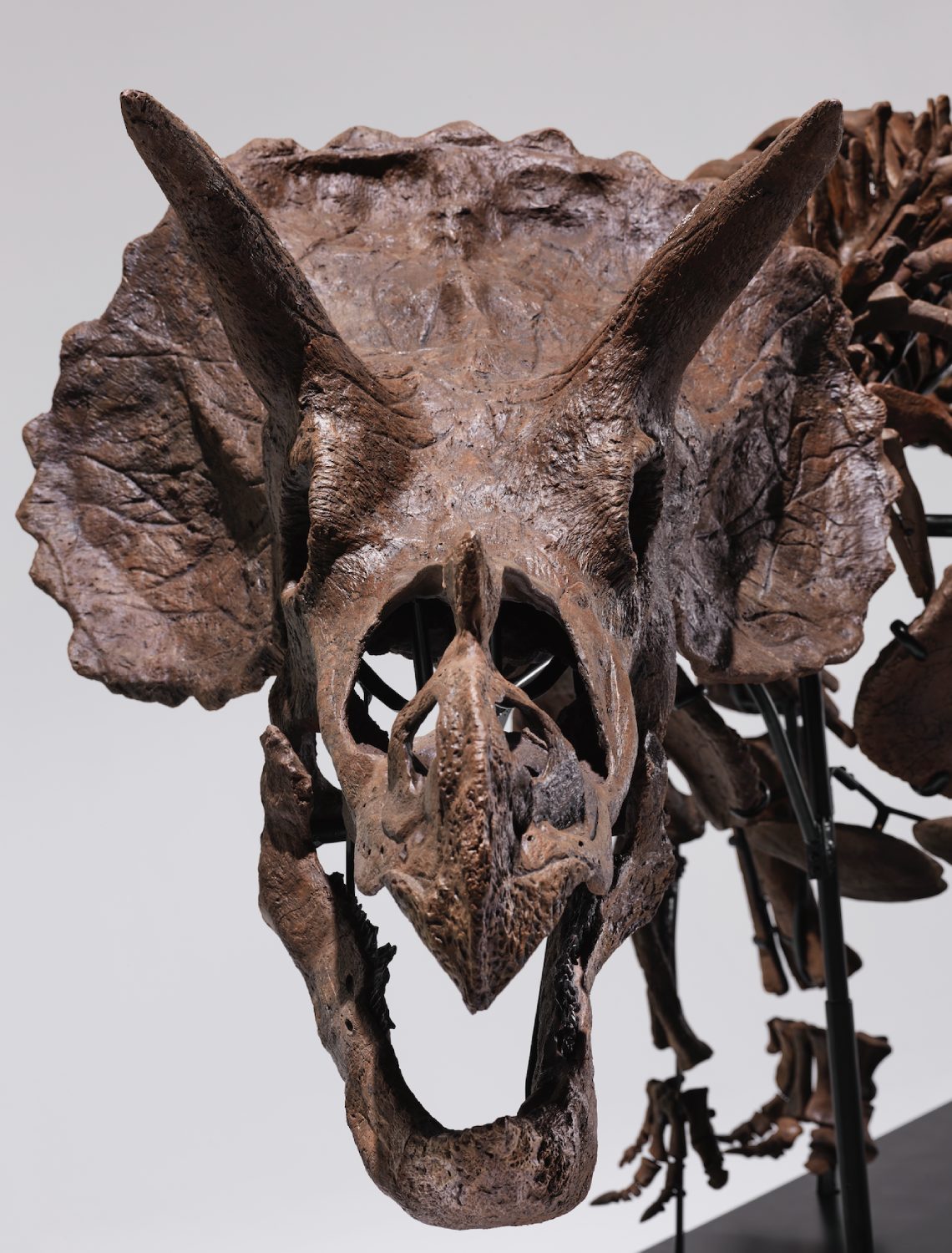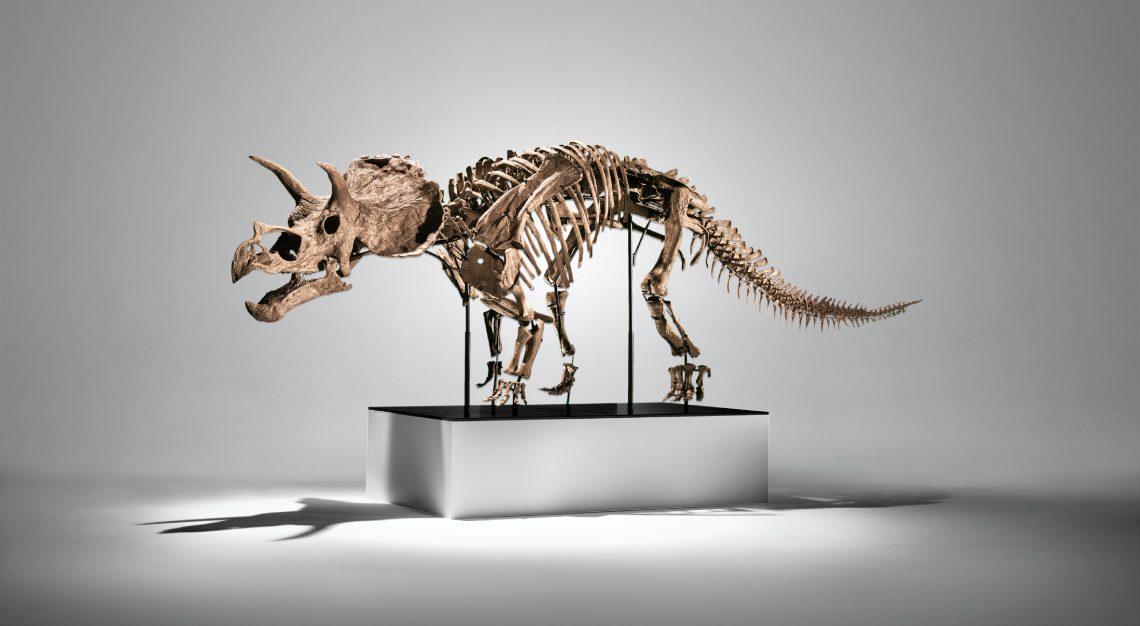Phillips is bringing natural history into the spotlight of its Modern & Contemporary Art sales with “Cera”, a 66-million-year-old juvenile Triceratops
Phillips will debut a new category this November, presenting museum-grade wonders of natural history in dialogue with blue-chip art. Headlining the newly curated “Out of This World” section is “Cera”, the first full juvenile Triceratops ever discovered. It is also the first Triceratops specimen of any kind to appear at a U.S. auction in more than ten years, carrying an estimate of up to US$3.5 million. The skeleton will lead the Modern & Contemporary Art Evening Sale on 18 November in New York, preceded by a public exhibition.
Cera dates to the Late Cretaceous, around 66 million years ago, and stands out for both rarity and condition. More than two-thirds of the skeleton is original, including key elements of the skull, vertebral column and limbs, having among the finest leg bones found in any Triceratops, juvenile or adult. At death, the dinosaur was roughly four years old and measured about fourteen feet in length, a striking contrast to thirty-foot adults. Excavated in 2016 in South Dakota’s Hell Creek Formation, the specimen was later nicknamed after The Land Before Time character.

The sale marks Phillips’ formal expansion into cross-category collecting, in partnership with natural-history specialist Christian D. Link, whose European auctions have included landmark fossil offerings. “Out of This World” will also feature rarities such as “The Thunderbolt”, a near two-foot gold nugget weighing 117.5 troy ounces, an exceptionally preserved Steneosaurus bollensis fossil captured mid-contraction, and a 2.5-billion-year-old tiger iron segmentation; all objects selected to blur the line between fine art and artefact.
For collectors with a taste for the sublime (and the prehistoric) though, Cera may just be the ultimate conversation piece.






